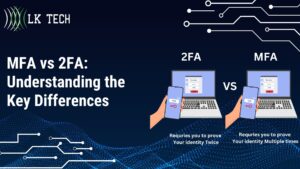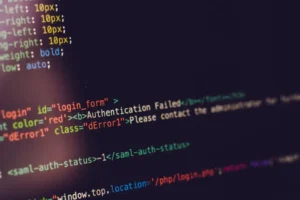Understanding the Difference Between MFA and 2FA for Better Security
In today's digital world, security is paramount. That's why you've likely encountered prompts for multi-factor authentication (MFA) or two-factor authentication (2FA) when accessing important accounts like email, banking, social media, and more. But what's the difference between MFA and 2FA, and which offers better protection for your sensitive data? Let's break it down.

- MFA vs 2FA : Understanding the Key Differences
What is Multi-Factor Authentication?
MFA requires users to present two or more credentials to gain access to an account or system. These credentials fall into three categories:
- Knowledge - Something the user knows, like a password, PIN, or security question. Passwords are the most common knowledge factor.
- Possession - Something the user has, like a physical token, app, or device that generates one-time codes. Many use authenticator apps like Google Authenticator and Microsoft Authenticator or hardware keys like YubiKey.
- Inherence - Something unique to the user, like biometrics. Fingerprint scanning, facial recognition, iris scans, and voice recognition are examples of biometric factors.
Requiring credentials from two or more of these factors provides enhanced security over single-factor authentication like just using a password. With multiple factors, if one factor is compromised, unauthorized access is still protected by the other(s).
How Does 2FA Differ from MFA?
While related, MFA and 2FA are not equal. Two-factor authentication calls for exactly two credentials to log in. Typically this is a password (knowledge) and a generated code from an authenticator app or hardware token (possession).
MFA is more flexible, allowing organizations to require multiple factors like a password AND a fingerprint scan AND facial recognition for access. Organizations can tailor factors based on the sensitivity of data.
- All types of MFA and 2FA
- Not all MFAs are strictly 2FA
For example, a bank may use 2FA with password and authenticator code for basic online account access. But for wire transfers or account changes, they could require password + authenticator + biometric for stronger 3FA.
Why is MFA So Important for Security?
MFA provides significant advantages over single-factor authentication:
- Prevents unauthorized access by making stolen credentials like passwords useless on their own. Criminals need the additional factor(s).
- Protects against phishing attempts that can reveal passwords. Even with passwords, phishers can't access accounts.
- Provides compliance with regulations like HIPAA, PCI DSS, and GDPR that require MFA to protect sensitive data.
- Supports detection of compromised accounts by noticing unusual activity like logins from new devices.
- Allows convenient and secure access with options like biometrics that users have on hand.
Benefits of MFA
| Benefit | Description |
| Prevent unauthorized access | Stolen credentials are useless alone |
| Protect against phishing | Phishing reveals passwords, not other factors |
| Regulatory compliance | Meets requirements like HIPAA, PCI DSS, GDPR |
| Detect compromised accounts | Notices unusual activity like new devices |
| Convenient access | Options like biometrics on users' devices |
With MFA, the cost of a breach is also reduced by limiting the data compromised. And users can regain account access easier with MFA device revocation versus resetting passwords.
Creating an Effective MFA And 2FA Policy
Organizations should consider what assets need the highest levels of protection with MFA based on data sensitivity and access levels. For example:
- Administrative and privileged access like IT staff and executives
- Third party tools and apps like payroll systems
- Customer data and PII like healthcare records or financial info
- Business critical systems like servers
- Remote network access including VPN and Wi-Fi

- MFA vs 2FA: Understanding the Key Differences
They should also outline user responsibilities like:
- Reporting lost credentials or devices immediately
- Not sharing or writing down codes
- Updating authenticator app details when getting a new mobile device
Rolling out new security tools like MFA takes training and support. Well-planned user education that explains the threats MFA protects against leads to higher adoption.
IT teams should have streamlined processes to replace lost authenticator devices and revoke access if credentials are compromised.
Working with an experienced IT services provider like LK Technologies streamlines MFA deployment. Their experts can:
- Assess your needs and high-value accounts
- Recommend the optimal MFA factors for your business
- Implement multi-factor authentication across on-premises and cloud apps
- Provide user-friendly training on MFA
- Deliver ongoing support like replacing lost tokens
With the right MFA solution and policies in place, you gain peace of mind knowing user access is secure. If you're looking for a team of IT experts in Cincinnati, Ohio, to protect your business from cyber threats, LK Technologies offers exceptional IT solutions tailored to your organization's needs. Contact us today to get a free consultation!


